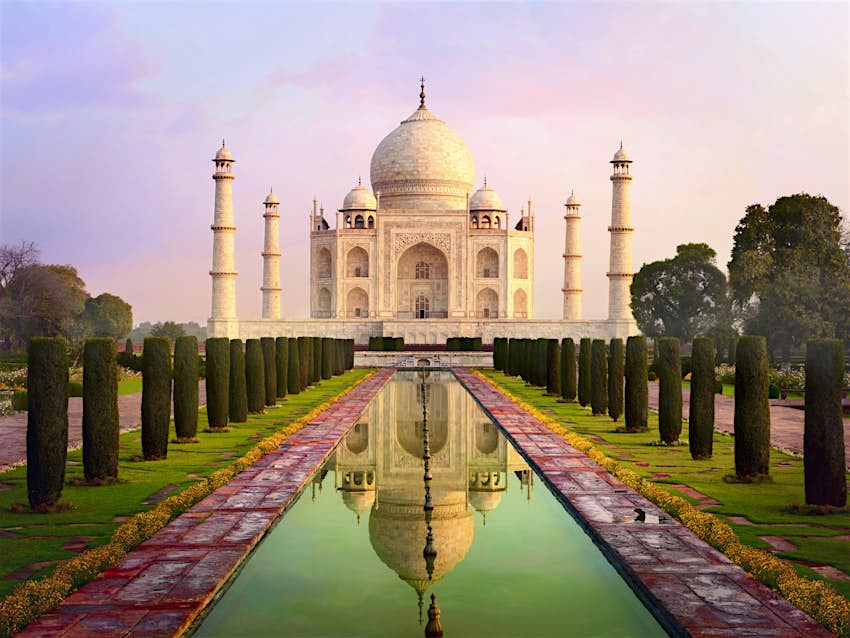Taj Mahal: A Symbol Of Monumental Love
Situated on the banks of Yamuna, the Taj Mahal in Agra is a monumental ode to eternal love. This 17th-century mausoleum was built for Mumtaz Mahal by her husband and Mughal Emperor Shah Jahan. Regarded as one of the most beautiful buildings in the world, the Taj brilliantly represents the height of Mughal architecture and grandeur. Such is its beauty that it has been recognised as one of the Seven Wonders of the Modern World. The Taj Museum, a modest but important part of the Taj Mahal complex, houses some authentic miniature paintings from the Mughal Empire. The pair of 17th-century ivory portraits of Shah Jahan and his wife are one of the museum’s centrepieces.
Taj Mahal Architecture

The Taj Mahal, an internationally recognised work of art, incorporates aspects of Islamic, Persian, and Indian architectural styles. The monument is 42 acres in size, bordered on three sides by crenellated walls and on the fourth by the Yamuna. White Makrana marble from Rajasthan was used in its construction. Thousands of precious and semi-precious gemstones were used to add to the memorial’s beauty.
The Taj Mahal is built on a raised square foundation with four minarets at its four corners. The crypts are housed in a symmetrical structure with an arch-shaped gateway beneath a massive dome and finial. The false sarcophagi of Shah Jahan and Mumtaz Mahal can be seen inside the mausoleum’s main hall. The actual tombs are placed on a lower level, inside a closed chamber.
Taj Mahal: History

Shah Jahan, the Mughal Emperor, commissioned the Taj Mahal, the world’s most magnificent mausoleum, for his favourite wife Mumtaz Mahal. On the banks of the Yamuna River, work of the tomb began in 1632, around a year after Mumtaz’s death. Though the main tomb was finished in 1643, the entire complex was not completed until 1653. Unfortunately, in 1658, the emperor was deposed and imprisoned by his son Aurangzeb. Shah Jahan spent his final days in captivity in the neighbouring Agra Fort, where he gazed upon his magnificent handiwork. He was interred inside the Taj Mahal alongside his beloved wife when he died in 1666.
Written By Ankit Lad | Subscribe To Our Telegram Channel To Get Latest Updates And Don’t Forget To Follow Our Social Media Handles Facebook | Instagram | LinkedIn | Twitter. To Get the Latest Updates From Arco Unico
